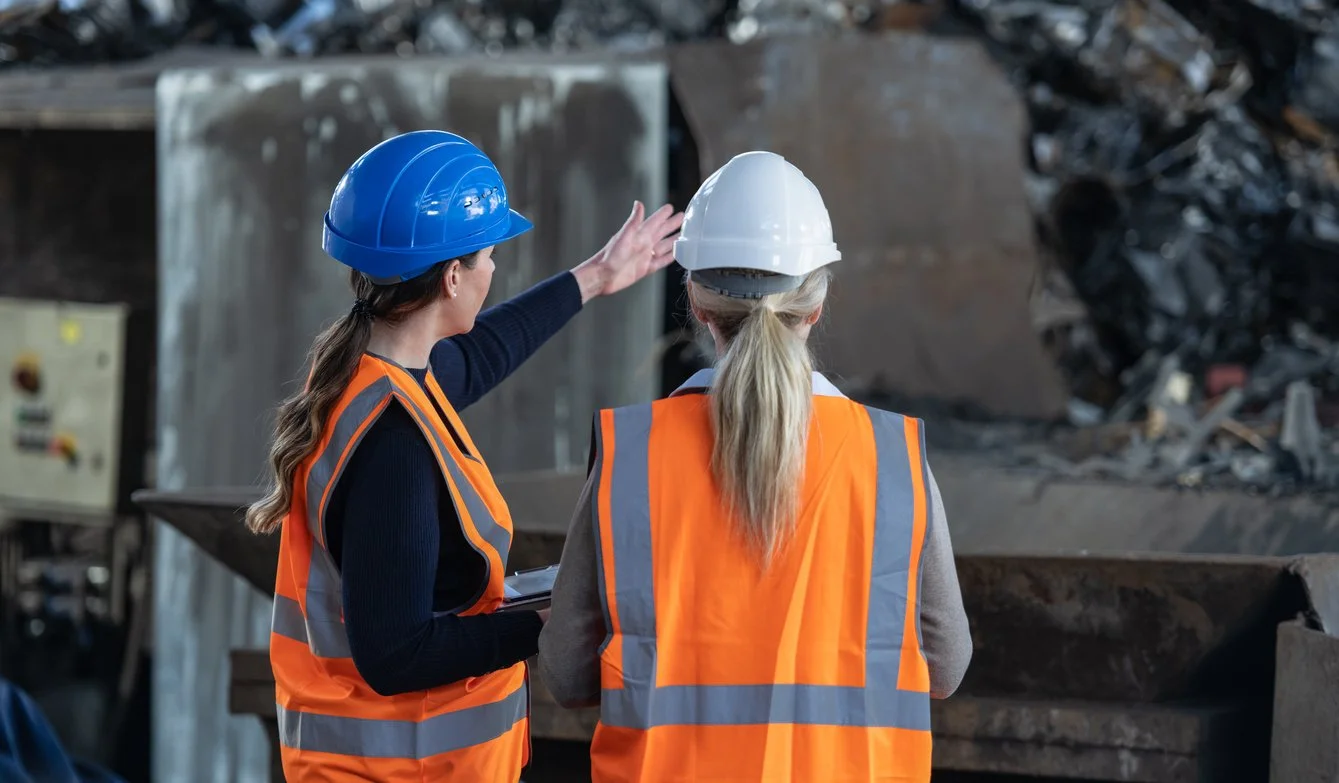Raising the Roof: Challenges Faced by Women in Construction
Welcome back to Part Two of our Blueprint for Inclusivity series where we meticulously explore the multifaceted aspects of psychological safety for women in construction, piece by piece. Our journey will traverse the landscape of challenges, strategies, and real-world examples, building towards a comprehensive understanding and actionable insights for a more inclusive future in the construction industry.
In the robust and dynamic world of construction, the evolving landscape is marked not just by the physical structures that rise from the ground but also by the changing composition of its workforce. Historically, the construction industry has been shaped by a predominantly male workforce, creating an environment and culture tailored to their needs and perspectives. As the sector strides towards inclusivity and diversity, the integration of women into this traditionally skewed field brings forth a spectrum of unique challenges. These challenges are pivotal in understanding not just the physical demands of the industry, but also the nuanced aspects of workplace culture, gender dynamics, and psychological safety.
At the heart of these challenges lies the concept of psychological safety. In an industry where risk assessment and physical safety are paramount, psychological safety – the comfort in being one's true self, expressing concerns, or admitting mistakes without fear of retribution or ridicule – is often overshadowed. Yet, it is this aspect of safety that can profoundly impact one’s sense of belonging, job satisfaction, and motivation. For women in construction, psychological safety is not just about feeling secure in speaking up but also about being recognised and valued in an environment that has traditionally not been designed for them.
With this backdrop, let us delve into the specific challenges faced by women in construction.
Gender Pay Gap and Contributing Factors
The gender pay gap in the Australian construction industry is a multifaceted issue. While it signifies financial inequality, it's also reflective of the lower representation of women across various job roles within the industry. This underrepresentation contributes to the gap, as many high-paying positions are less frequently occupied by women (WGEA). Understanding and addressing the roots of this disparity, including encouraging broader participation of women in all roles, is crucial for enhancing psychological safety by promoting a more equitable and inclusive workplace culture.
Navigating Gender-Based Adversity
In the Australian construction industry, a significant 75% of women have reported experiencing gender-based adversity in their careers, according to the National Association of Women in Construction (NAWIC). These experiences, though varying in nature and intensity, paint a concerning picture of the workplace environment for women. Gender-based adversity can range from overt forms of discrimination and harassment to more subtle, yet equally impactful, manifestations. Women often find themselves having to contend with outdated paradigms about the 'role of a woman' in the workplace. This includes being relegated to administrative tasks, being expected to make coffee, or being the default choice for taking notes in meetings - roles that are stereotypically and unfairly assigned based on gender.
Such challenges, whether blatant or insidious, contribute to a workplace culture that can be exclusionary and demoralising. They not only affect women’s day-to-day work experience but also impact their career progression and sense of self-worth. The prevalence of these issues underscores the need for a workplace environment where every employee, regardless of gender, is acknowledged, secure, and valued. Tackling these issues with sensitivity and a firm commitment is crucial in fostering a culture of respect and inclusivity. By addressing gender-based adversity head-on and creating channels for open discussion and feedback, the industry can make significant strides in enhancing overall psychological safety and ensuring that all employees feel empowered and respected.
Leadership Representation and
its Psychological Impact
The underrepresentation of women in senior or leadership roles within the Australian construction industry is not just a career advancement issue; it's a matter of psychological safety. This disparity creates an environment where women may feel their voices are less heard and their contributions less valued. Such a dynamic can significantly affect women's self-esteem and ambition, leading to a workplace that may not feel fully inclusive or supportive. The psychological safety of all employees is enhanced when there is diverse representation in leadership, as it fosters a culture of respect and inclusivity. Recognising and actively working to change the current state of leadership diversity is therefore essential for creating a psychologically safe and empowering environment for everyone in the construction industry.
The Challenge of Gender Representation
in a Traditionally Skewed Industry
In the Australian construction industry, where historically one gender has been more prevalent, women face distinct challenges. For example, in Queensland's construction workforce, only 15% were women in 2020, with just 5% in trades and labouring roles, predominantly occupying administrative positions (CSQ). This long-standing gender imbalance has influenced the industry’s culture, often making women feel marginalised or underappreciated. Such conditions directly impact their psychological safety, affecting their sense of belonging, self-esteem, and professional aspirations.
Despite the slow but positive change towards greater gender diversity, the legacy of traditional industry mindsets remains a significant hurdle. The ongoing challenges of feeling isolated and undervalued in a male-prevalent environment highlight the need for a concerted effort to not only increase gender representation but also to cultivate a culture where psychological safety is valued and prioritised for all employees.
Safety Equipment and Amenities for Women
The standard Personal Protection Equipment (PPE) required at all construction sites are often designed with a male physique in mind. This oversight leads to scenario where women are provided with helmets, goggles, gloves, boots and other gear that sometimes may not fit properly. Ill-fitting PPE not only compromises safety – increasing the risk of workplace accidents and injuries – but also affects comfort and work efficiency. When safety equipment fails to align with the wearer’s body, it can become a constant distraction, hinder mobility, or even lead to long-term health issues due to improper ergonomic support.
Amenities as an Afterthought
In the construction industry, amenities for women often seem like an afterthought. Female workers frequently face the inconvenience of leaving the worksite for bathroom breaks, or using poorly maintained facilities, sometimes marred by graffiti. This not only disrupts their work but also impacts their dignity and comfort.
The absence of essential personal hygiene and sanitary disposal units, especially critical for women’s health needs, further exacerbates the issue. Such neglect can lead to feelings of alienation and being undervalued, affecting women's sense of belonging in the industry.
Addressing these shortcomings is vital for creating an inclusive environment. Ensuring clean, accessible, and respectful amenities, including personal hygiene facilities, is not just about meeting basic needs; it's a statement of respect and consideration for all workers, essential for a psychologically safe workplace.
The journey of women in construction is punctuated by a range of challenges that extend far beyond the physical demands of the job. From the underrepresentation in leadership roles to battling entrenched gender stereotypes, from striving for work-life balance amidst rigid work schedules to facing harassment and discrimination, and dealing with practical issues like ill-fitting PPE and inadequate facilities - these hurdles paint a complex picture of the obstacles women face in this industry. Each challenge not only impacts their professional trajectory but also deeply affects their psychological safety and sense of belonging.
As we close this chapter on the challenges, our series will next turn its focus to strategies for promoting psychological safety for women in construction. This upcoming segment aims to explore practical, innovative approaches and policies that can create a more inclusive, respectful, and supportive environment. We will delve into how the construction industry can evolve to not only accommodate but also empower its female workforce, thereby enriching the industry as a whole. Stay tuned as we lay out the blueprint for change, illustrating how psychological safety can be nurtured and strengthened through targeted strategies and initiatives.


